Original URL: https://www.theregister.com/2013/05/08/review_crucial_m500_960gb_ssd/
Review: Crucial M500 960GB SSD
A consumer-friendly drive with class-leading tech, capacity
Posted in Personal Tech, 8th May 2013 08:58 GMT
When Intel entered the personal computer solid-state drive market it was with the stated aim of making SSDs something more than an expensive luxury.
It implied it would drive prices down to a point where SSDs would become a viable alternative to the standard rattling old mechanical disk drive.
But even the blue-hued chip giant must have been somewhat surprised by just how cutthroat this SSD marketplace has become. While SSDs may never quite reach parity with HDDs when it comes to price per gigabyte, they have become sufficiently less expensive to make the combination of a small SDD (for the OS and apps) and an HDD (storing everything else) a lot more attractive than it was even six months ago.
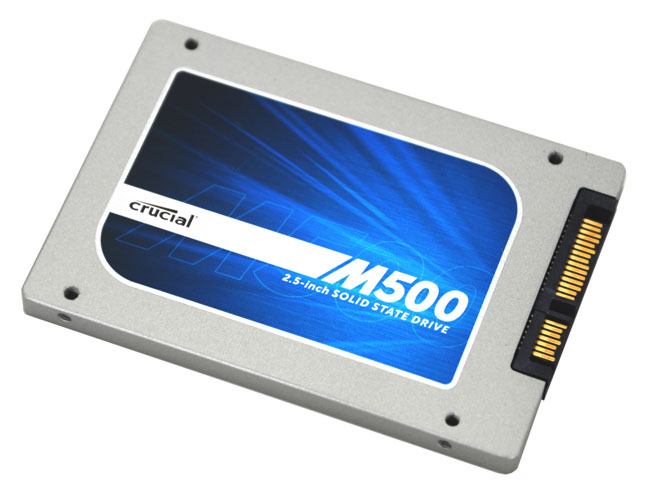
Ground-breaker: Crucial’s M500 SSD
So drives have become more affordable. What about the other side of the equation: storage space? Large-capacity SSDs have been available for quite some time, either in the standard 2.5-inch laptop format or, for really large volumes of data, fitted on PCIe cards. These drives are historically aimed at the enterprise market because, let’s face it, corporations are the only entities with budgets big enough to pay the huge sums of money these large drives normally command. The 800GB version of Intel’s S3700 drive, for example, costs around £1732. Or how about the 14 grand OCZ wants for its 3.2TB Z-Drive R4 PCIe card?
Crucial’s latest drive range, the M500 series, includes a drive which could be a real game changer in the high-capacity SSD segment and also, as it turns out, pushes the Pound-per-gigabyte envelope further towards that of HDDs. The 960GB M500 costs just under the £500 mark, including VAT, which works out to be an astonishing 48p per gigabyte, and is the first terabyte (ish) SSD aimed at ordinary users.
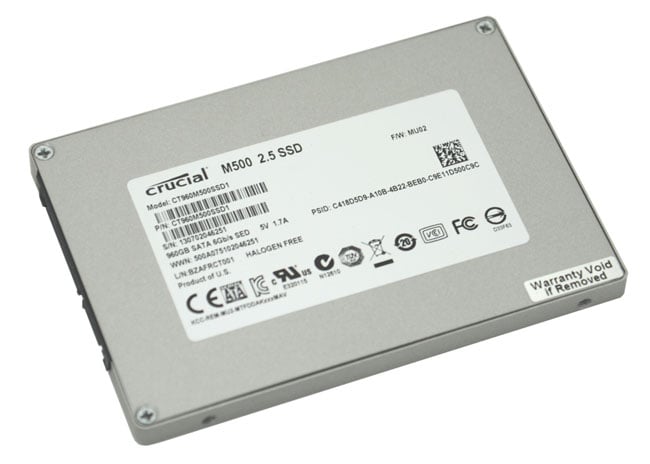
Round the back of one of the many form-factors the M500 comes in
Four drives currently make up the M500 family, with 120GB, 240GB, 480GB and 960GB capacities, respectively. All have claimed sequential read speeds of up to 500MB/s. The 480GB and 960GB units have claimed sequential write speeds of up to 400MB/s, while the 240GB unit has a 250MB/s write performance, and the 120GB drive struggles along at 130MB/s. The drives also come in a number of form-factors: all of them are available in 7mm- and 9.5mm-thick 2.5-inch formats, with the 120, 240 and 480GB capacities also available in mSata and M.2 versions.
M.2, you ask? It’s the marketing name for the “Next Generation Form Factor” (NGFF) for SSDs and is expected to become the standard form-factor for Ultrabook drives in the near future. It’s based around a thinner PCB than mSata and comes in a variety of PCB lengths - Crucial uses an 80 x 22mm PCB for the M500 series. It can also support Sata 3Gb/s and 6Gb/s, but perhaps more importantly, given where storage connectivity (SSDs in particular) is heading, four PCI Express lanes, which in turn should make possible to a huge leap in bandwidth availability.
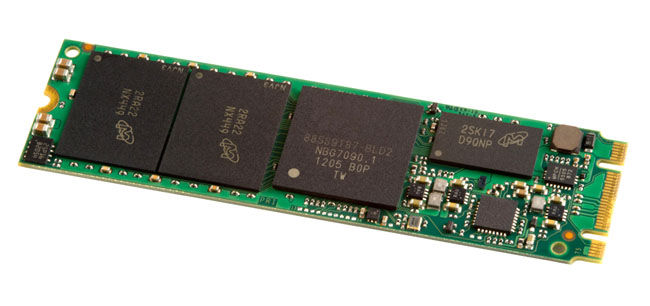
The M500 in the new M.2 form-factor
But back to the star of the show, the 960GB drive. All the M500s use Micron’s latest 20nm NAND Flash 128Gb (16GB) chip dies, the first in the industry with this density apparently. The new chips have a 16KB page size and feature 512 pages per block. The downside is that they are only rated at 3000 program-erase (P/E) cycles – hence the drive’s three-year warranty, although Crucials claim a drive endurance of 72TB TBW (Total Bytes Written), which works out to be around 40GB of data written every day for five years.
The drive has eight chips on each side of the PCB - and each chip contains four 16GB dies - giving the drive a total capacity of 1024GB, but because of the added space Crucial sets aside to cope with failed NAND cells, the capacity drops to 960GB. All this is configured in what Crucial calls ”RAIN” (Redundant Array of Inexpensive NAND), something that is used in enterprise drives but as we will see later this isn’t the only enterprise technology to be found in the M500.
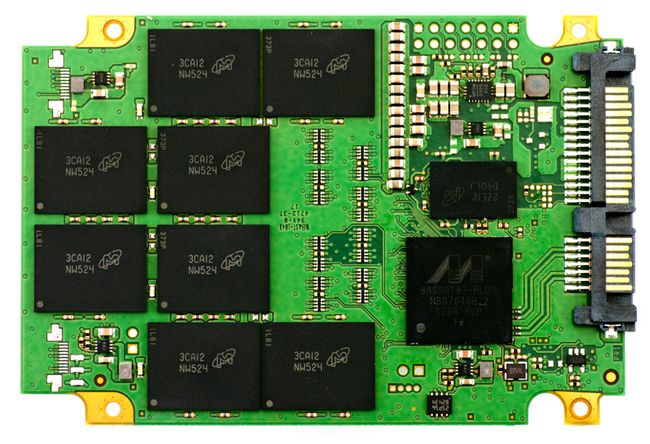
The 2.5-inch M500's PCB. All the capacitors at the top right of the board let it finish writing when there’s a power cut
The thin controller
The M500 series use the third-generation Marvell 88SS9187 controller - also used by Plextor in its M5 Pro SSD - but with Crucial’s hand in the firmware development. The controller itself is based on a dual-core Marvell 88FR102 V5 CPU capable of running eight NAND Flash channels through an interface that supports the latest ONFI (Open NAND Flash Interface) 3.0 specification. The latest incarnation of the ONFI interface brings with it such goodies as lower voltages, on-die termination and perhaps even more importantly an increase in interface speed from ONFI 2.0’s 200MB/s to a very healthy 400MB/s. For cache purposes, the 88SS9187 supports up to 1GB of 800MHz DDR 2 and DDR 3 for mapping algorithms.
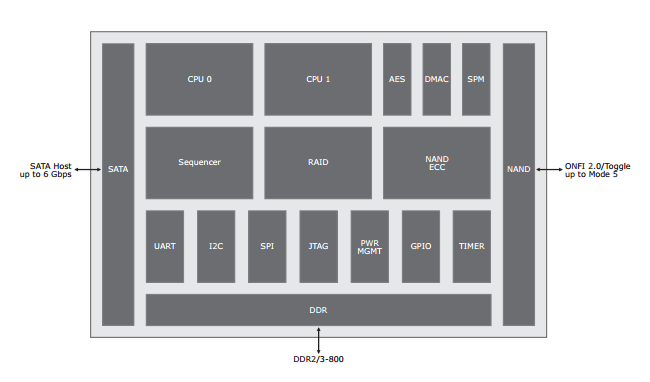
Inside the Marvell 88SS9187
As with most modern drives, the M500 supports 256-bit AES encryption but Crucial has beefed up the security still further by adding support for both TCG Opal 2.0 and IEEE 1667 specifications. Having the Opal 2.0 support means that that you can use third-party encryption to make your system even more secure. It also means that the drive is fully compatible with the BitLocker encryption built into Windows 8. It’s the first SSD with explicit support for this feature.
If you look at the drive’s board, you’ll notice something a little different from conventional mainstream drives and a feature that is normally more at home on enterprise-grade SSDs. The bank of capacitors above the controller and one of the two cache chips ensure that should there be a power failure, the drive has sufficient juice to complete any writes it is performing. This is the first drive with this feature aimed at the consumer market that I have seen.
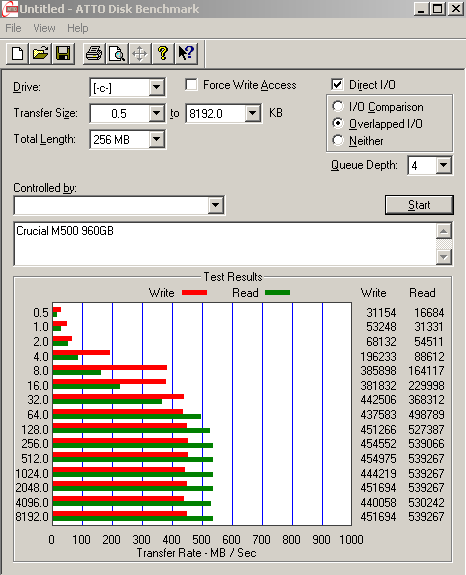
ATTO results
Another feature normally seen in enterprise grade drives is true thermal management. Should the controller temperature exceed 70°C, the firmware instructs the drive to reduce performance until it returns to normal operating temperature. This is done without changing the Sata PHY rate so making the operation transparent to the host. Very clever.
Yet another first is the drive’s support for Device Sleep (DEVSLP), a new standard which should be part of the chipset specification for Intel's Haswell processor technology when it arrives.
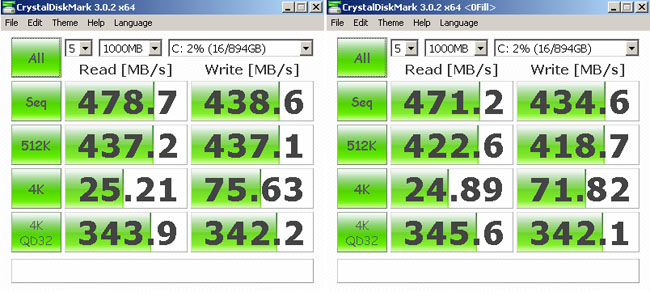
CrystalDiskMark results: uncompressed data on the left, compressed data on the right
As I say, Crucial quote sequential read/write figures for the M500 960GB of 500MB/s and 400MB/s, respectively, and this is pretty much what I found when I tested the drive with the ATTO benchmark: 539MB/s reads, 451MB/s writes. As the drive uses a Marvell controller it doesn’t suffer any performance loss when it comes to using compressed or uncompressed data, as can be seen from the two sets of CrystalDiskMark results: 478MB/s reads, 438MB/s writes when tested at the default uncompressed data mode versus 471MB/s reads, 434MB/s writes when the benchmark was switched to using compressed data.
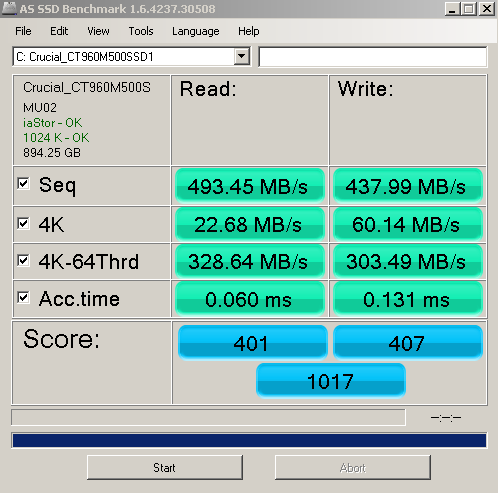
AS SSD benchmark results
It’s the same story in the AS SSD benchmark. The default incompressible test produces sequential read/write scores of 493MB/s and 437MB/s, respectively. Switching to AS SSD’s compressible data test, the drive doesn’t miss a beat, producing a read score of 497MB/s and writes of 430MB/s.
The Reg Verdict
Crucial’s M500 SSD series has some interesting and forward-thinking technology built in, and it’s the first family of solid-state drives that uses the latest 128Gb NAND chip technology. The flagship 960GB drive is the real star of the family. It’s one of the most important drives launched for quite some time: a large capacity drive which, while still expensive relative to HDDs, could usher in cheaper and larger capacity SSDs in the near future. ®